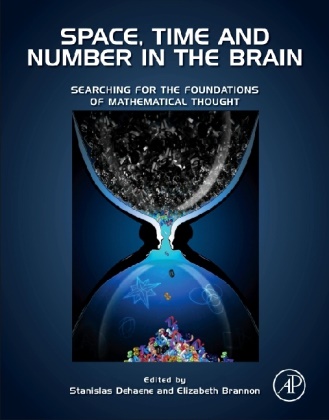Read more
Klappentext Of interest to researchers from basic neuroscience, psychology, developmental science, neuroimaging, neuropsychology and theoretical biology, this title deals with neurological and psychological foundations of mathematical cognition.Of interest to researchers from basic neuroscience, psychology, developmental science, neuroimaging, neuropsychology and theoretical biology, this title deals with neurological and psychological foundations of mathematical cognition. Inhaltsverzeichnis Section I Mental Magnitudes and their Transformations 1. Mental Magnitudes 2. Objects, Sets, and Ensembles 3. Attention Mechanisms for Counting in Stabilized and in Dynamic Displays Section II Neural Codes for Space, Time and Number 4. A Manifold of Spatial Maps in the Brain 5. Temporal Neuronal Oscillations can Produce Spatial Phase Codes 6. Population Clocks 7. Discrete Neuroanatomical Substrates for Generating and Updating Temporal Expectations 8. The Neural Code for Number Section III Shared Mechanisms for Space, Time and Number? 9. Synesthesia 10. How is Number Associated with Space? The Role of Working Memory 11. Neglect "Around the Clock? 12. Saccades Compress Space, Time, and Number* Section IV Origins of Proto-Mathematical Intuitions 13. Origins of Spatial, Temporal, and Numerical Cognition 14. Evolutionary Foundations of the Approximate Number System 15. Origins and Development of Generalized Magnitude Representation Section V Representational Change and Education 16. Foundational Numerical Capacities and the Origins of Dyscalculia 17. Neurocognitive Start-Up Tools for Symbolic Number Representations 18. Natural Number and Natural Geometry 19. Geometry as a Universal Mental Construction 20. How Languages Construct Time 21. Improving Low-Income Children's Number Sense
List of contents
Section I Mental Magnitudes and their Transformations
1. Mental Magnitudes
2. Objects, Sets, and Ensembles
3. Attention Mechanisms for Counting in Stabilized and in Dynamic Displays
Section II Neural Codes for Space, Time and Number
4. A Manifold of Spatial Maps in the Brain
5. Temporal Neuronal Oscillations can Produce Spatial Phase Codes
6. Population Clocks
7. Discrete Neuroanatomical Substrates for Generating and Updating Temporal Expectations
8. The Neural Code for Number
Section III Shared Mechanisms for Space, Time and Number?
9. Synesthesia
10. How is Number Associated with Space? The Role of Working Memory
11. Neglect "Around the Clock”
12. Saccades Compress Space, Time, and Number*
Section IV Origins of Proto-Mathematical Intuitions
13. Origins of Spatial, Temporal, and Numerical Cognition
14. Evolutionary Foundations of the Approximate Number System
15. Origins and Development of Generalized Magnitude Representation
Section V Representational Change and Education
16. Foundational Numerical Capacities and the Origins of Dyscalculia
17. Neurocognitive Start-Up Tools for Symbolic Number Representations
18. Natural Number and Natural Geometry
19. Geometry as a Universal Mental Construction
20. How Languages Construct Time
21. Improving Low-Income Children's Number Sense

